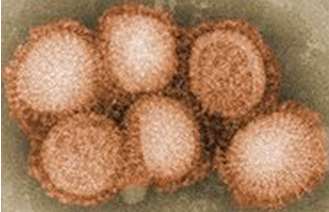Team:Georgia State/Oursystem
From 2010.igem.org
| Line 1: | Line 1: | ||
| - | [[Image:H1N1.png| | + | [[Image:H1N1.png|bottom|atl=Alt text|H1N1 INFLUENZA A VIRUS]] |
---- | ---- | ||
Revision as of 01:26, 28 October 2010
Background: In 2009 the World Health Organization raised its pandemic alert for H1N1 influenza A virus to the 6 phase alert. This is the highest alert level and it indicates widespread community transmission of the virus in over two continents. The H1N1 Influenza A virus is a quadruple reassortment of two swine strains, one human strain, and one avian strain. More than 214 countries and territories have reported laboratory – confirmed cases of pandemic H1N1 Influenza A. The US Centers for Disease Control and Prevention reported between April 2009 and April 2010, approximately 61million cases of pandemic H1N1 occurred, including 274,000 hospitalizations and 12,470 deaths.
Problem: Efficient and timely vaccine production was a challenge for the scientific community during the pandemic outbreak of H1N1. Another problem with the Influenza viruses is the high variability and mutations that they present with each year. This makes vaccine production time difficult and time consuming.
The Pichia System: The Pichia system that we plan to establish has the capability of overcoming this problem mentioned above. We have designed a standard Pichia system that can be used for the production of various different vaccines.The system involves an interchangeable antigen part that is designed based on the variant of the virus antigen that needs to be produced or any other antigen that needs to be produced. To illustrate this we present the globular head region of the H1N1 Influenza A virus.
 "
"
